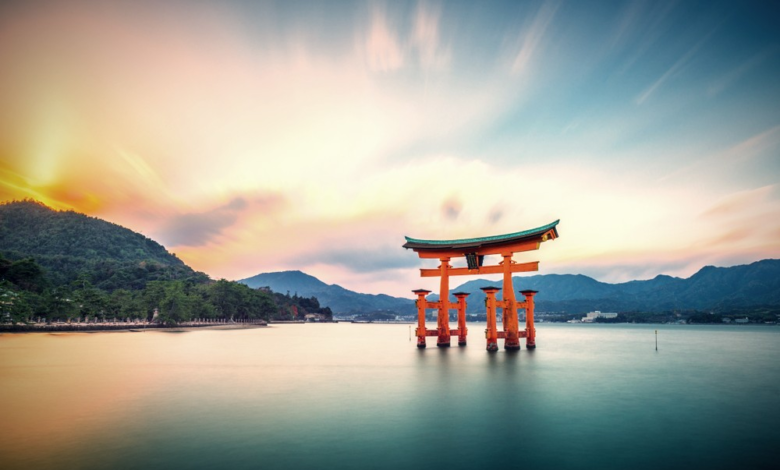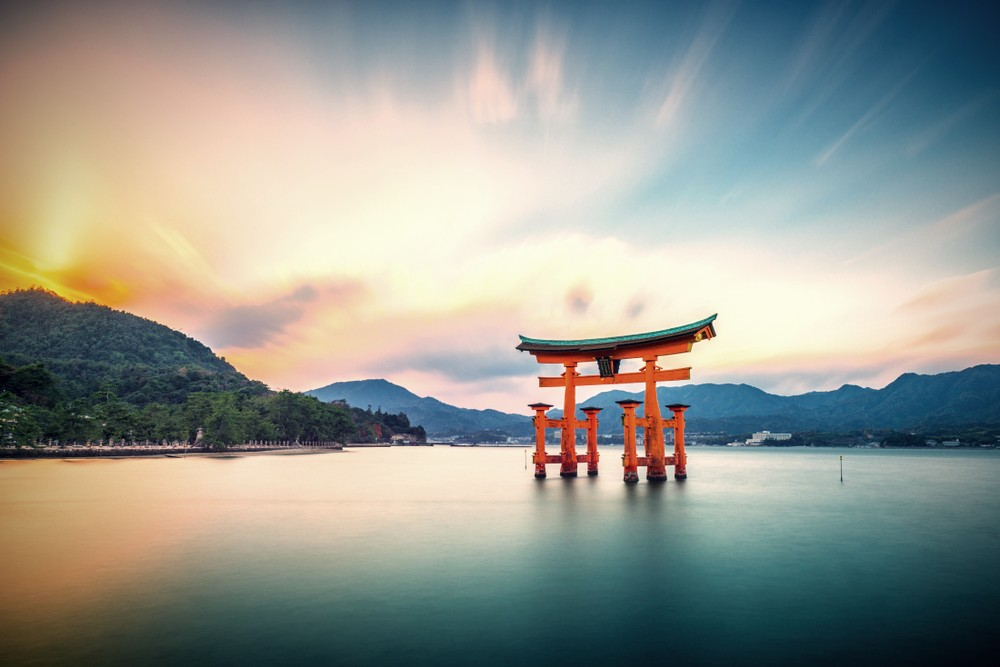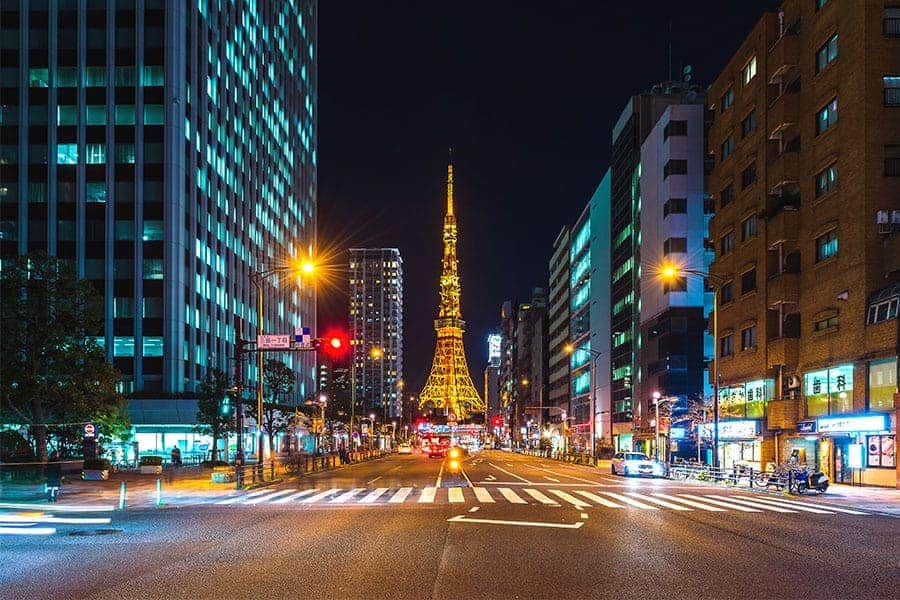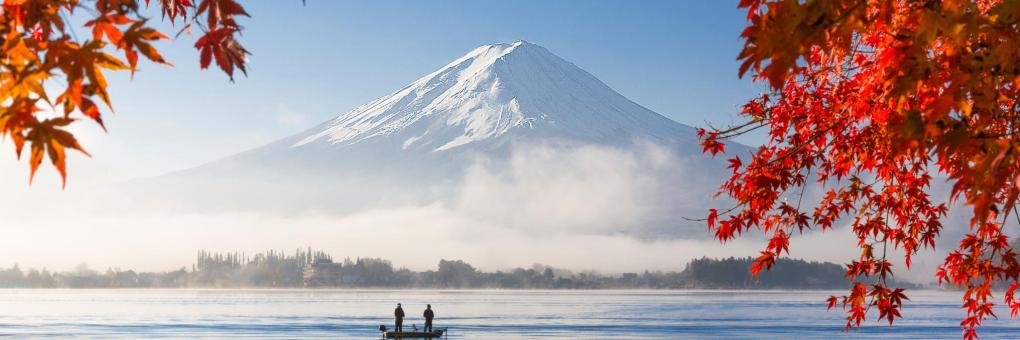Exploring the Land of the Rising Sun: A Traveler’s Guide to Japan

Introduction:
Embarking on a journey to Japan is like stepping into a realm where ancient traditions seamlessly blend with modern innovation. From bustling metropolises to serene temples, Japan offers a captivating and diverse experience for travelers. In this featured article, we will delve into the highlights of a visit to Japan, including travel connectors, prices, and discounts that can enhance your trip.
- Travel Connectors:
Japan boasts a well-developed transportation system that makes traveling within the country efficient and convenient. The Shinkansen, or bullet train, is renowned for its speed and punctuality, connecting major cities like Tokyo, Kyoto, and Osaka. The extensive railway network and efficient subway systems in metropolitan areas ensure easy access to various attractions. Additionally, domestic flights and long-distance buses provide alternative transportation options. - Accommodation Prices:
Accommodation prices in Japan can vary depending on the location, season, and type of accommodation. Major cities like Tokyo and Kyoto tend to have higher prices compared to smaller towns. Budget travelers can opt for capsule hotels, hostels, or guesthouses, which provide affordable options with shared facilities. Mid-range options include business hotels and traditional ryokans, while luxury hotels offer top-notch amenities and services. - Dining Costs:
Japanese cuisine is renowned worldwide, and savoring the local dishes is an essential part of the Japanese experience. Dining costs can vary depending on the type of restaurant and location. Street food stalls and casual eateries offer budget-friendly options, while mid-range restaurants provide a wide range of choices at reasonable prices. Fine dining establishments and specialty restaurants may be more expensive but offer unique culinary experiences. - Discount Passes and Cards:
To make the most of your travels in Japan, consider utilizing discount passes and cards that offer cost savings on transportation and attractions. The Japan Rail Pass is a popular choice for international visitors, providing unlimited travel on JR trains, including the Shinkansen. Regional passes, such as the Kansai Thru Pass or the Tokyo Subway Ticket, offer unlimited travel within specific regions. Additionally, city-specific cards like the Suica or Pasmo IC cards enable convenient and discounted travel on public transportation. - Cultural Discounts:
Exploring Japan’s cultural heritage is a fascinating aspect of any visit. Many cultural sites offer discounted admission fees for foreign tourists. The Japan National Tourism Organization (JNTO) provides the “Japan Heritage Pass,” which grants discounted or free entry to selected cultural and historical sites. Additionally, some attractions offer discounted tickets for specific times or in combination with other nearby attractions. - Seasonal Discounts:
Japan’s distinct seasons offer unique experiences throughout the year, and taking advantage of seasonal discounts can enhance your trip. During the off-peak seasons, such as winter and summer, some accommodations and attractions offer discounted rates. Ski resorts in winter and beach destinations in summer often have special packages and promotions. Planning your visit during these periods can help you save money while enjoying fewer crowds. - Shopping Bargains:
Japan is a shopper’s paradise, offering a wide range of products, from traditional crafts to cutting-edge technology. Look out for tax-free shopping opportunities available to international visitors, which allow you to receive a refund on consumption tax at designated stores. Outlet malls, flea markets, and department store sales are excellent options for finding discounted goods. Additionally, electronic and duty-free shops often offer competitive prices on popular items.
These additional details offer further insights into the cultural, historical, natural, and technological aspects of Japan, showcasing the country’s many facets and providing a glimpse into its unique and captivating allure.

e some additional details about travel and tourism in Japan:
- Traditional Japanese Culture:
Japan is deeply rooted in its traditional culture, which is evident in its art, architecture, festivals, and customs. Explore historic sites such as Kyoto’s temples and shrines, experience a traditional tea ceremony, witness the art of kimono dressing, or immerse yourself in the tranquility of a Zen garden. Traditional cultural experiences offer a glimpse into Japan’s rich heritage and provide a deeper understanding of its customs and values. - Cherry Blossom Season:
One of the most iconic and celebrated times to visit Japan is during the cherry blossom season, known as “Sakura.” From late March to early April, cherry trees across the country burst into beautiful blooms of pink and white. Parks and gardens become picturesque settings for hanami (flower viewing) picnics and gatherings. Popular destinations for cherry blossom viewing include Tokyo’s Ueno Park, Kyoto’s Maruyama Park, and the Philosopher’s Path in Kyoto. - Onsen (Hot Springs):
Japan is renowned for its natural hot springs, or onsen, which offer relaxation and rejuvenation. With over 3,000 hot springs throughout the country, visiting an onsen is a quintessential Japanese experience. Popular hot spring regions include Hakone, Kusatsu, and Beppu. Whether you choose to soak in outdoor baths surrounded by nature or luxurious indoor facilities, the therapeutic properties of the mineral-rich waters are sure to leave you refreshed. - Japanese Gardens:
Japanese gardens are meticulously designed landscapes that reflect harmony, balance, and a deep connection to nature. Explore gardens such as Kenrokuen in Kanazawa, Kairakuen in Mito, or the Ritsurin Garden in Takamatsu. These serene spaces feature meticulously manicured trees, tranquil ponds, stone pathways, and traditional architecture. Japanese gardens offer a peaceful retreat and an opportunity to appreciate the artistry and aesthetics of Japanese landscape design. - Anime and Manga Culture:
Japan’s vibrant pop culture scene, particularly anime (animated works) and manga (comic books), has gained international popularity. Akihabara in Tokyo is a hub for anime and manga enthusiasts, with numerous shops selling merchandise, themed cafes, and even dedicated museums. Attend anime conventions, visit Studio Ghibli Museum in Tokyo, or explore the bustling Nakano Broadway shopping complex to immerse yourself in Japan’s anime and manga culture. - Mount Fuji:
A visit to Japan would be incomplete without witnessing the majestic Mount Fuji. This iconic volcanic peak, standing at 3,776 meters (12,389 feet), is a UNESCO World Heritage site and a symbol of Japan. Climbing Mount Fuji during the official climbing season (July to September) is a popular activity, but you can also enjoy its beauty from various viewpoints, such as Lake Kawaguchi or the Chureito Pagoda in Fujiyoshida. - Traditional Festivals:
Japan is known for its vibrant and lively festivals, or matsuri, which celebrate local traditions, folklore, and religious events. Festivals can range from grand spectacles with elaborate processions, such as Kyoto’s Gion Matsuri, to smaller local celebrations. Witness the excitement of festivals like the Sapporo Snow Festival, the Aomori Nebuta Festival, or the Kanda Matsuri in Tokyo, where you can experience traditional music, dance, and vibrant parades. - Modern Architecture:
Alongside its rich traditional heritage, Japan is also renowned for its cutting-edge modern architecture. Cities like Tokyo and Osaka showcase futuristic skyscrapers, innovative designs, and avant-garde structures. Visit architectural marvels such as Tokyo Skytree, the Tokyo International Forum, or the Osaka Castle Umeda Sky Building for a glimpse into Japan’s modern architectural achievements. - Outdoor Activities:
Japan’s diverse landscapes offer ample opportunities for outdoor enthusiasts. Hiking trails, such as the Kumano Kodo pilgrimage routes or the Nakasendo Trail, allow you to explore scenic mountains and rural landscapes. Enjoy water sports like snorkeling and diving in Okinawa’s crystal-clear waters or skiing and snowboarding in popular resorts like Niseko or Hakuba during the winter season. Japan’s natural beauty provides a playground for adventure seekers. - Technology and Innovation:
Japan is renowned as a global leader in technological advancements. Explore the futuristic cityscape of Tokyo, visit cutting-edge museums like the Miraikan (National Museum of Emerging Science and Innovation), or experience the latest gadgets and inventions in Akihabara. Japan’s technological prowess is evident in its high-speed trains, robotics, virtual reality experiences, and advancements in various industries. - Rural Japan:
While Japan’s cities offer a vibrant urban experience, exploring rural areas provides a glimpse into a more traditional way of life. Visit picturesque villages like Shirakawa-go, known for its traditional thatched-roof houses, or the historical town of Takayama. Rural Japan offers a slower pace, scenic landscapes, and an opportunity to connect with local communities and their traditional crafts,19. Safety and Cleanliness:
Japan is known for its high levels of safety and cleanliness. The crime rate is relatively low, and public spaces are well-maintained and hygienic. You can feel comfortable exploring the streets, using public transportation, and enjoying the local cuisine without major concerns. However, it’s always important to practice common safety precautions and be mindful of your belongings, as in any travel destination. - Etiquette and Customs:
Japanese culture places a strong emphasis on etiquette and respect. Familiarizing yourself with some basic customs can enhance your experience and show appreciation for the local culture. For example, bowing is a common form of greeting, taking off your shoes before entering homes or certain establishments is customary, and observing proper table manners is expected. Learning a few simple phrases in Japanese, such as greetings and thank you, can also go a long way in creating positive interactions with locals.
captivating blend of traditional heritage and modern innovation, providing a diverse range of experiences for travelers. Whether you’re exploring ancient temples, indulging in culinary delights, immersing yourself in pop culture, or reveling in the beauty of nature, Japan’s travel and tourism scene has something to offer every visitor. With its efficient transportation system, various accommodation options, cultural discounts, and unique attractions, Japan is a destination that promises an unforgettable journey.

some further details about travel and tourism in Japan:
- Japanese Cuisine:
Japanese cuisine is renowned worldwide for its freshness, presentation, and exquisite flavors. From sushi and sashimi to ramen and tempura, Japan offers a vast array of culinary delights. Each region has its own specialties, such as Hiroshima’s okonomiyaki or Osaka’s takoyaki. Don’t miss the opportunity to explore local food markets, street food stalls, and traditional izakayas (pubs) to savor the authentic flavors of Japan. - Tea Culture:
Tea plays a significant role in Japanese culture, and experiencing a traditional tea ceremony is a must. Matcha, a powdered green tea, is prepared with meticulous precision, and the ceremony embodies harmony, respect, and tranquility. You can participate in a tea ceremony at tea houses in Kyoto, Tokyo, and other cities, or visit tea plantations in regions like Uji to learn about the tea-making process and sample various types of Japanese tea. - Anime and Manga Pilgrimages:
For anime and manga enthusiasts, Japan offers numerous pilgrimage sites related to popular series and characters. Anime fans often visit locations that serve as inspiration for settings in anime, such as the town of Washinomiya for “Lucky Star” or the city of Chichibu for “Anshan: The Flower We Saw That Day.” Additionally, themed cafes and shops dedicated to specific anime and manga provide immersive experiences for fans. - Traditional Crafts:
Japan is known for its exquisite traditional crafts, many of which have been passed down through generations. From pottery and lacquerware to textiles and paper crafts, each region has its own unique craft traditions. Visit craft centers, artisan workshops, or local markets to witness artisans at work and purchase authentic handmade items as souvenirs or gifts. - Sumo Wrestling:
Sumo wrestling is Japan’s national sport and has a long-standing history and cultural significance. You can witness this ancient sport by attending a sumo tournament, known as a basho, held in Tokyo, Osaka, Nagoya, and Fukuoka. Experience the electrifying atmosphere as wrestlers, clad in traditional loincloths, compete in the dohyo (sumo ring). - Gardens of Kyoto:
Kyoto, with its rich cultural heritage, is home to some of Japan’s most beautiful and iconic gardens. The city is known for its meticulous landscaping and attention to detail. Explore renowned gardens such as Kinkaku-ji (Golden Pavilion) and Ginkaku-ji (Silver Pavilion), stroll through the bamboo groves of Arashiyama, or visit the expansive gardens of the Kyoto Imperial Palace. Each garden offers a serene oasis amid the bustling city. - Winter Illuminations:
During the winter season, Japan comes alive with dazzling light displays and illuminations. Cities like Tokyo, Osaka, and Kobe transform into vibrant wonderlands, with streets, parks, and buildings adorned with millions of colorful lights. Popular illumination spots include Tokyo Midtown, Kobe Luminarie, and Nabana no Sato in Nagoya. These enchanting displays create a magical atmosphere and offer fantastic photo opportunities. - Traditional Ryokan Experience:
Staying in a traditional Japanese inn, known as a ryokan, is a unique and immersive experience. Ryokans offer traditional tatami-matted rooms, futon beds, and communal baths. Enjoy kaiseki, a multi-course traditional meal, soak in a hot spring bath, and experience omotenashi, the Japanese concept of exceptional hospitality. Popular ryokan destinations include Hakone, Kinosaki Onsen, and Miyajima. - Wellness and Relaxation:
Japan offers numerous opportunities for relaxation and wellness. Apart from hot springs, you can indulge in therapeutic experiences such as forest bathing (shinrin-yoku) in the country’s lush forests, or try traditional Japanese spa treatments like shiatsu massage and aromatherapy. Yoga retreats, meditation centers, and mindfulness workshops are also gaining popularity in Japan. - Music and Performing Arts:
Japan has a rich cultural heritage of music and performing arts. Traditional forms such as Noh theater, Kabuki, and Bunraku puppetry showcase centuries-old traditions. Attend a performance at renowned theaters like Kabukiza in Tokyo or Minamiza in Kyoto to witness these captivating art forms. Japan is also a hub for contemporary music, with thriving music scenes in cities like Tokyo and Osaka, offering a diverse range of genres and live performances. - Volunteering and Experiential Tourism:
Many organizations in Japan offer opportunities for travelers to engage in volunteer work and experiential tourism. Whether it’s participating in a tea farm harvest, helping with local conservation efforts, or joining community activities, these experiences provide a unique way to connect with locals, contribute to society, and gain a deeper understanding of Japanese culture. - Festivals by Season:
Japan’s festivals are not limited to a particular time of year. Throughout the seasons, various festivals celebrate different themes, cultural eventsI apologize, but it seems that my response got cut off. Here are some additional details about festivals in Japan based on the season:
- Spring: The cherry blossom season mentioned earlier is one of the most significant events in spring. Other spring festivals include the Takayama Festival in April, the Aoi Matsuri in Kyoto in May, and the Sanno Matsuri in Tokyo in June.
- Summer: Summer festivals, known as “matsuri,” are lively and vibrant, often featuring processions, fireworks, traditional performances, and street food stalls. The Gion Matsuri in Kyoto, the Tenjin Matsuri in Osaka, and the Nebuta Matsuri in Aomori are some of the notable summer festivals.
- Autumn: Autumn is a beautiful time to visit Japan due to the vibrant fall foliage. Festivals such as the Jidai Matsuri in Kyoto, the Tsukimi (moon-viewing) festivals, and the Kurama Fire Festival in Kyoto offer unique experiences during this season.
- Winter: Winter festivals often revolve around snow and ice. The Sapporo Snow Festival in Hokkaido is a renowned event where enormous snow sculptures are created. Other winter festivals include the Otaru Snow Light Path Festival, the Yokote Kamakura Festival, and the Nozawa Onsen Fire Festival.
These festivals showcase Japan’s rich cultural heritage, provide opportunities to witness traditional performances and rituals, and allow you to celebrate alongside locals.

Here are some additional details:
- Onsen (Hot Springs):
Japan is famous for its onsen, natural hot springs that offer relaxation and therapeutic benefits. There are numerous hot spring resorts throughout the country, with some of the most popular ones located in areas such as Hakone, Kusatsu, Beppu, and Noboribetsu. Onsen bathing is a traditional practice in Japan, and it is customary to follow specific etiquette, such as washing before entering the bath. Soaking in an onsen surrounded by beautiful natural landscapes is a rejuvenating experience. - Mount Fuji:
Mount Fuji is an iconic symbol of Japan and a UNESCO World Heritage site. Located southwest of Tokyo, it is the country’s highest mountain at 3,776 meters (12,389 feet). Climbing Mount Fuji during the official climbing season (July and August) is a popular activity for both locals and tourists. The ascent to the summit offers breathtaking panoramic views, and witnessing the sunrise from the top is a memorable experience. However, if climbing is not your preference, you can still enjoy the view of Mount Fuji from various viewpoints around the region. - Hokkaido:
Hokkaido, the northernmost island of Japan, offers unique attractions and natural beauty. It is known for its vast wilderness, stunning national parks, and ski resorts. The city of Sapporo, the capital of Hokkaido, is famous for its beer, Snow Festival, and vibrant food scene. In summer, visitors can enjoy flower fields in Furano and Biei, while in winter, skiing and snowboarding in Niseko and other resorts are popular activities. Hokkaido’s distinct culture and cuisine, including fresh seafood and dairy products, make it a must-visit destination. - Okinawa:
Okinawa is a tropical paradise consisting of over 150 islands in the southern part of Japan. It boasts crystal-clear turquoise waters, white sandy beaches, and a laid-back island atmosphere. The main island of Okinawa is home to Naha, the capital city, where you can explore the vibrant markets, visit historical sites like Shuri Castle, and indulge in unique Okinawan cuisine. The islands offer opportunities for snorkeling, diving, and water sports, with Ishigaki and Miyako islands being popular destinations for their pristine beaches and coral reefs. - Traditional Performing Arts:
Japan has a rich tradition of performing arts that continue to be celebrated today. Traditional forms such as Kabuki, Noh theater, and Bunraku puppetry captivate audiences with their elaborate costumes, stylized movements, and historical narratives. You can catch performances at dedicated theaters in Tokyo, Kyoto, and other major cities. Some theaters even offer guided tours and backstage experiences to provide insight into the intricacies of these art forms. - Hiroshima and Nagasaki:
Hiroshima and Nagasaki are cities with significant historical importance due to their tragic past as the only two cities to experience atomic bombings during World War II. Today, they serve as reminders of the devastating consequences of nuclear weapons and promote peace and reconciliation. Hiroshima’s Peace Memorial Park and Nagasaki’s Peace Park are solemn places of reflection, housing memorials, museums, and monuments that pay homage to the victims and advocate for a nuclear-free world. - Traditional Festivals:
Traditional festivals, known as “matsuri,” are an integral part of Japanese culture and offer a glimpse into local customs and traditions. These festivals often involve processions, music, dance, and religious rituals. The Gion Matsuri in Kyoto, the Nebuta Matsuri in Aomori, the Awa Odori in Tokushima, and the Tanabata Festival in Sendai are just a few examples of the vibrant festivals celebrated throughout the year. Attending a local matsuri allows you to immerse yourself in the lively atmosphere and witness traditional performances and parades. - Outdoor Activities:
Japan’s diverse landscapes provide ample opportunities for outdoor activities. Hiking enthusiasts can explore trails in regions such as the Japanese Alps, Yakushima Island, and the Kumano Kodo pilgrimage routes. Cycling tours are popular in areas like Shimanami Kaido, a scenic route connecting islands in the Seto Inland Sea. Water sports enthusiasts can enjoy surfing in Chiba, diving in Okinawa, or kayaking in the tranquil lakes of Hokkaido. Skiing and snowboarding are popular winter activities in resorts like Niseko, Hakuba, and Shiga Kogen.
These additional details showcase the wide range of experiences and attractions that Japan has to offer. Whether you’re interested in cultural heritage, outdoor adventures, culinary delights, or historical sites, Japan provides a rich and diverse travel experience.

Here are some more details about Japan:
- Technology and Innovation:
Japan is renowned for its technological advancements and innovative industries. From cutting-edge robotics and automation to high-speed trains (shinkansen) and futuristic architecture, Japan showcases its expertise in various technological fields. Cities like Tokyo and Osaka are hubs for technological innovation, featuring state-of-the-art electronics, advanced transportation systems, and modern infrastructure. - Traditional Accommodations:
In addition to ryokans (traditional inns) mentioned earlier, Japan offers other unique accommodation options. One such option is a temple stay, where visitors can experience the serene atmosphere of a Buddhist temple, participate in meditation sessions, and enjoy vegetarian meals. Another option is a stay in a traditional farmhouse, known as a minshuku, which allows guests to experience rural life and engage in agricultural activities. - Religious and Spiritual Sites:
Japan is home to a diverse range of religious and spiritual sites. Shinto shrines and Buddhist temples are scattered throughout the country, each with its own unique architectural style and cultural significance. Some notable sites include the Fushimi Inari Taisha in Kyoto, the Itsukushima Shrine in Miyajima, the Todaiji Temple in Nara (housing the Great Buddha statue), and the Meiji Shrine in Tokyo. These sites offer opportunities for reflection, exploration, and an understanding of Japan’s religious heritage. - Art and Museums:
Japan has a rich artistic heritage, and its museums and art galleries showcase both traditional and contemporary works. The Tokyo National Museum in Tokyo, the Kyoto National Museum in Kyoto, and the Miho Museum in Shiga are renowned for their collections of Japanese art, including paintings, sculptures, ceramics, and calligraphy. Modern art enthusiasts can explore contemporary art museums like the Mori Art Museum and the 21_21 Design Sight in Tokyo. - Fashion and Street Style:
Japan is known for its unique and influential fashion scene. Cities like Tokyo and Osaka are fashion-forward, with vibrant street styles, trendy boutiques, and iconic department stores. Neighborhoods such as Harajuku and Shibuya in Tokyo are particularly famous for their fashion subcultures, where you can witness creative and eclectic styles. Shopping in Japan offers a wide range of options, from high-end designer brands to quirky vintage stores and trendy fast fashion outlets. - Historical Castles:
Japan’s history is dotted with majestic castles that served as symbols of power and defense during feudal times. Some well-preserved castles include Himeji Castle, often regarded as Japan’s most beautiful castle; Matsumoto Castle, known as the “Crow Castle” due to its black exterior; and Kumamoto Castle, with its impressive stone walls and turrets. Exploring these castles allows visitors to step back in time and learn about Japan’s samurai and feudal history. - Nature and National Parks:
Japan is blessed with diverse and breathtaking natural landscapes. From towering mountains and active volcanoes to serene lakes, lush forests, and coastal regions, there are numerous national parks and natural reserves to explore. Popular destinations include the Fuji-Hakone-Izu National Park, Nikko National Park, Daisetsuzan National Park, and Shiretoko National Park. These areas offer opportunities for hiking, wildlife spotting, hot spring bathing, and enjoying the beauty of nature. - Bullet Trains (Shinkansen):
Japan’s high-speed rail network, known as the shinkansen, is renowned for its efficiency, punctuality, and speed. These trains connect major cities across the country and allow travelers to cover long distances quickly. Riding the shinkansen is an experience in itself, offering comfortable seating, panoramic views, and the opportunity to witness the precision and engineering marvels of Japanese transportation. - Hidden Gems:
While popular destinations like Tokyo, Kyoto, and Osaka attract a significant number of tourists, Japan also has lesser-known hidden gems worth exploring. These include places like Kanazawa, known for its well-preserved historical districts and beautiful gardens; Takayama, with its traditional atmosphere and annual festivals; and the Oki Islands, a remote archipelago offering pristine nature and unique cultural traditions. Venturing off the beaten path allows you to discover a different side of Japan. - Japanese Hospitality (Omotenashi):
One aspect that sets Japan apart is its renowned hospitality and customer service, known as omotenashi. The Japanese take pride in providing exceptional service, whether it’s in hotels, restaurants, or any other establishment. The attention to detail, politeness, and willingness to go the extra mile to ensure a memorable experience contribute to Japan’s reputation as a welcoming and hospitable destination.
Conclusion:
A trip to Japan is an immersive experience filled with cultural treasures, natural beauty, and technological marvels. With an efficient transportation system, diverse accommodation options, and a variety of discounts available, exploring Japan becomes even more accessible and affordable. Embrace the uniqueness of this captivating country, indulge in its culinary delights, and immerse yourself in its rich traditions and modern wonders for an unforgettable journey to the Land of the Rising Sun.



